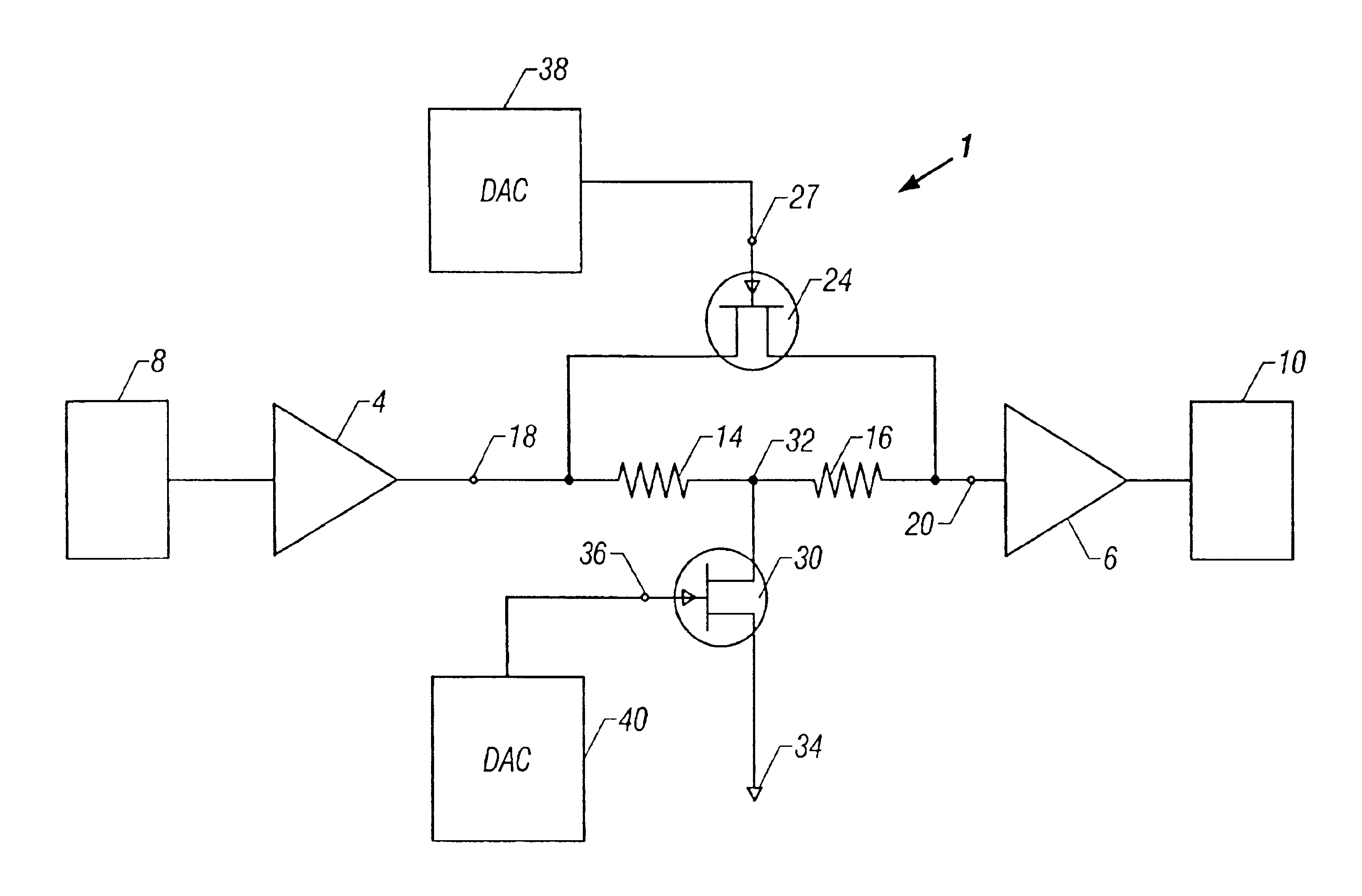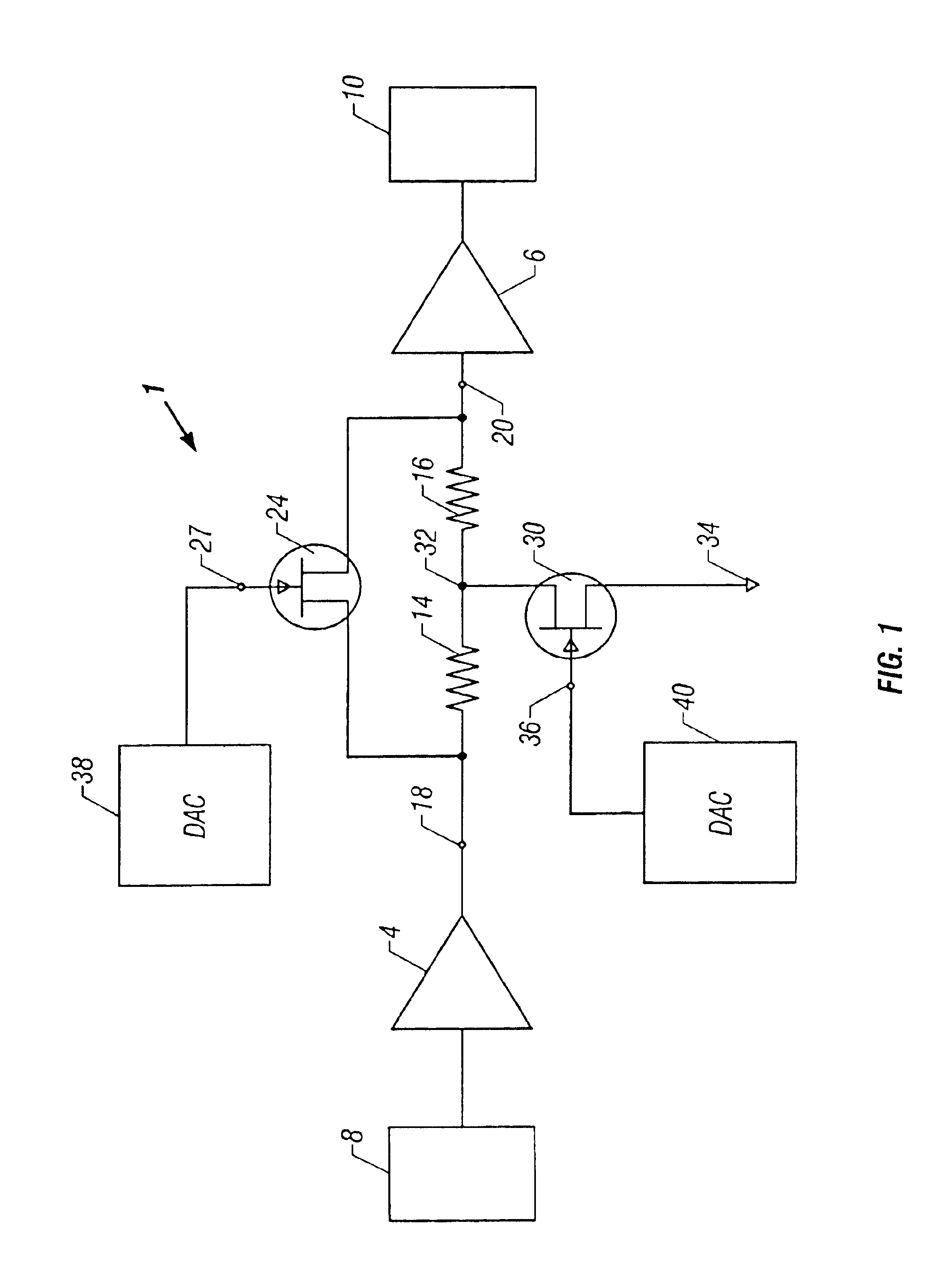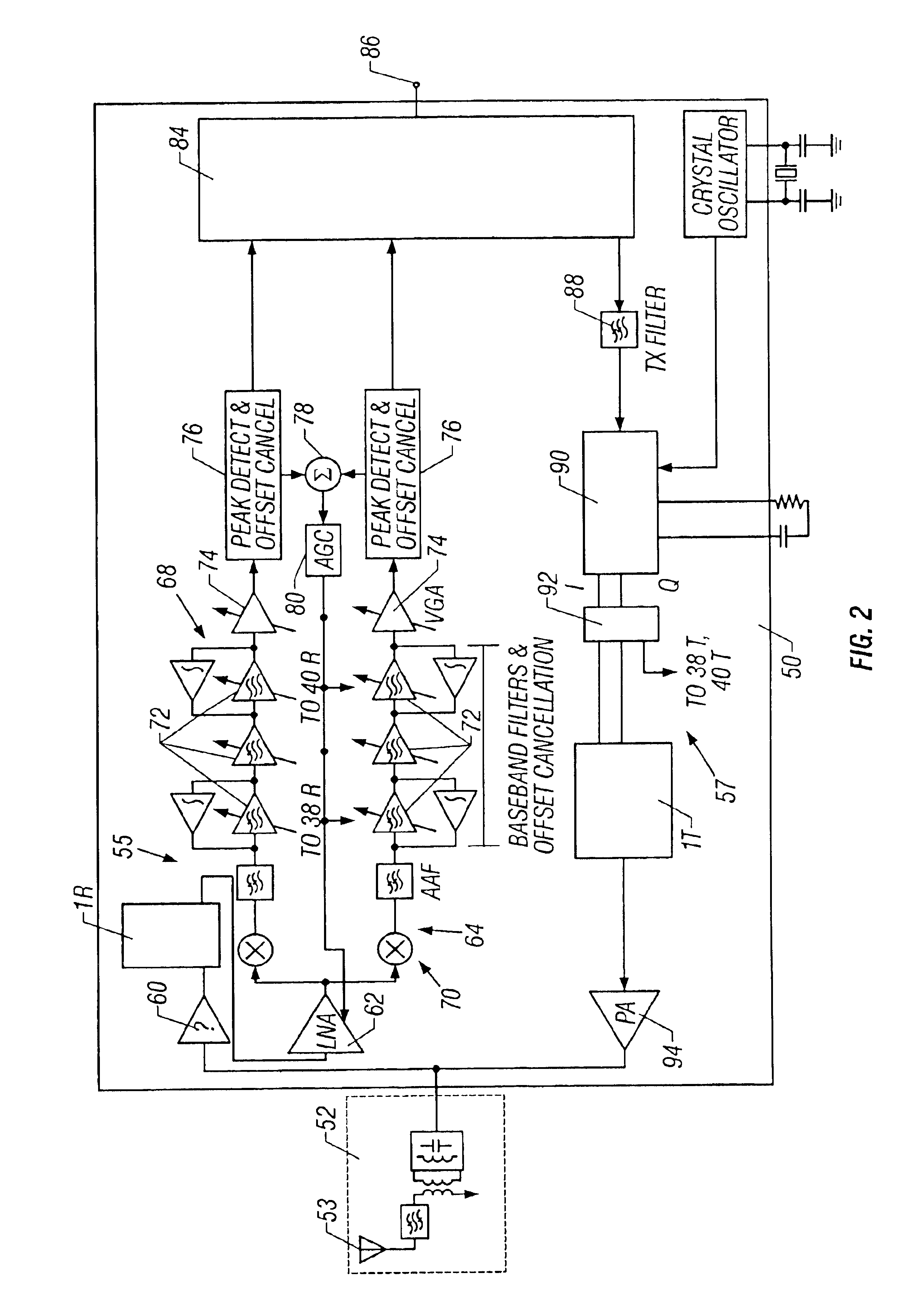Constant impedance in CMOS input and output gain stages for a wireless transceiver
a wireless transceiver and gain stage technology, applied in the direction of gain control, multiple-port active network, transmission, etc., can solve the problems of variable amount of reflective power within the circuit, and achieve the effect of reducing potential, simple construction, and efficient operation
- Summary
- Abstract
- Description
- Claims
- Application Information
AI Technical Summary
Benefits of technology
Problems solved by technology
Method used
Image
Examples
Embodiment Construction
FIG. 1 is an illustration of a constant impedance gain control circuit 1 interacting in the environment of a communications circuit. For brevity, the constant impedance gain control circuit 1 will be called the gain control circuit 1. In the present example, gain will be a factor of less than unity. Thus the gain control circuit 1 could also be referred to as an attenuator. However, at certain levels of description, the labels applied to gain control circuits, attenuators, and filters can effectively be arbitrary. The gain control circuit 1 is connected between amplifiers 4 and 6 in a communications circuit. However, the input means 9 provides the signal which will be operated upon. FIG. 1 is thus illustrative of a transmitter or receiver. In particular illustration in FIG. 1, the transmitter option is illustrated by showing within the input means 9 a Gilbert cell modulator 7 which converts a signal to be transmitted into in-phase, and quadrature grid radio frequency signal. The rad...
PUM
 Login to View More
Login to View More Abstract
Description
Claims
Application Information
 Login to View More
Login to View More - R&D
- Intellectual Property
- Life Sciences
- Materials
- Tech Scout
- Unparalleled Data Quality
- Higher Quality Content
- 60% Fewer Hallucinations
Browse by: Latest US Patents, China's latest patents, Technical Efficacy Thesaurus, Application Domain, Technology Topic, Popular Technical Reports.
© 2025 PatSnap. All rights reserved.Legal|Privacy policy|Modern Slavery Act Transparency Statement|Sitemap|About US| Contact US: help@patsnap.com



